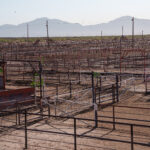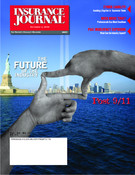Standard & Poor’s said that although the European reinsurance market is expected to remain hard beyond 2003, it maintains its negative outlook for the industry for the fifth year running, due to uncertainty over the long-term sustainability of rate increases.
“The negative outlook indicates that market trends will continue to exert downward pressure on the credit ratings on many reinsurers in the market, with rating downgrades more prevalent than affirmations or upgrades,” credit analyst Christian Dinesen said.
Significant rate increases following the loss activity arising from the events of Sept. 11 last year have been implemented across a variety of business lines and are supported by an important tightening of terms and conditions in reinsurance contracts. These developments have sharply enforced a market hardening that follows the very low rating levels reached in 1998, which were subsequently compounded by nine $1 billion catastrophe losses in 1999. Nevertheless, the developments are not yet sufficient to support a change in the outlook for the market.
“Rates on some lines of business have not yet reached a level where reinsurers will break even in terms of technical underwriting,” credit analyst Stephen Searby said. “To reach breakeven, rates need to increase by about another 10 percent- 15 percent,” he added.
The main reason Standard & Poor’s is maintaining its negative outlook for the reinsurance industry is uncertainty over the sustainability of the rate increases. “Although Standard & Poor’s is fairly confident that most reinsurers will reach a technical profit in the next 12 months, there are very real risks that competition will reemerge before reinsurers have rebuilt their financial strength and are ready to face additional large claims,” Searby added.
Furthermore, reinsurers have made net pretax provisions for losses arising from Sept. 11 of at least $15 billion in addition to provisions made to accommodate the losses from 1999, and they need several years of real profits to recuperate. “Although the reinsurance market is making firm statements against the return to cyclicality, competition for market share and more competitive, less profitable rates, it has to prove that the old habits are dead and gone,” credit analyst Rob Jones said.
With significant industrial loss activity from the last quarter of 2001 compounding the losses of Sept. 11, the market suffered one of its least profitable years ever in terms of pure underwriting. At the same time, although reinsurers invest the majority of their assets in fixed-income bonds, the downturn in global equity markets has exacerbated the market’s difficulties by putting yet more pressure on capital. Nevertheless, the poor investment returns will contribute to enforcing market underwriting discipline among reinsurers and their clients—the insurance companies—who have greater exposure to equities.
Topics Trends Profit Loss Europe Reinsurance
Was this article valuable?
Here are more articles you may enjoy.


 NTSB Unclear Who Was at Controls in Jet Crash That Killed Biffle and 6 Others
NTSB Unclear Who Was at Controls in Jet Crash That Killed Biffle and 6 Others  CEO Sentenced in Miami to 15 Years in One of the Largest Health Care Fraud Cases
CEO Sentenced in Miami to 15 Years in One of the Largest Health Care Fraud Cases  Twice Injured Firefighter Loses Second Workers’ Compensation Claim
Twice Injured Firefighter Loses Second Workers’ Compensation Claim  More US Beef Plants May Close as Cattle Herds Keep Tightening
More US Beef Plants May Close as Cattle Herds Keep Tightening 


